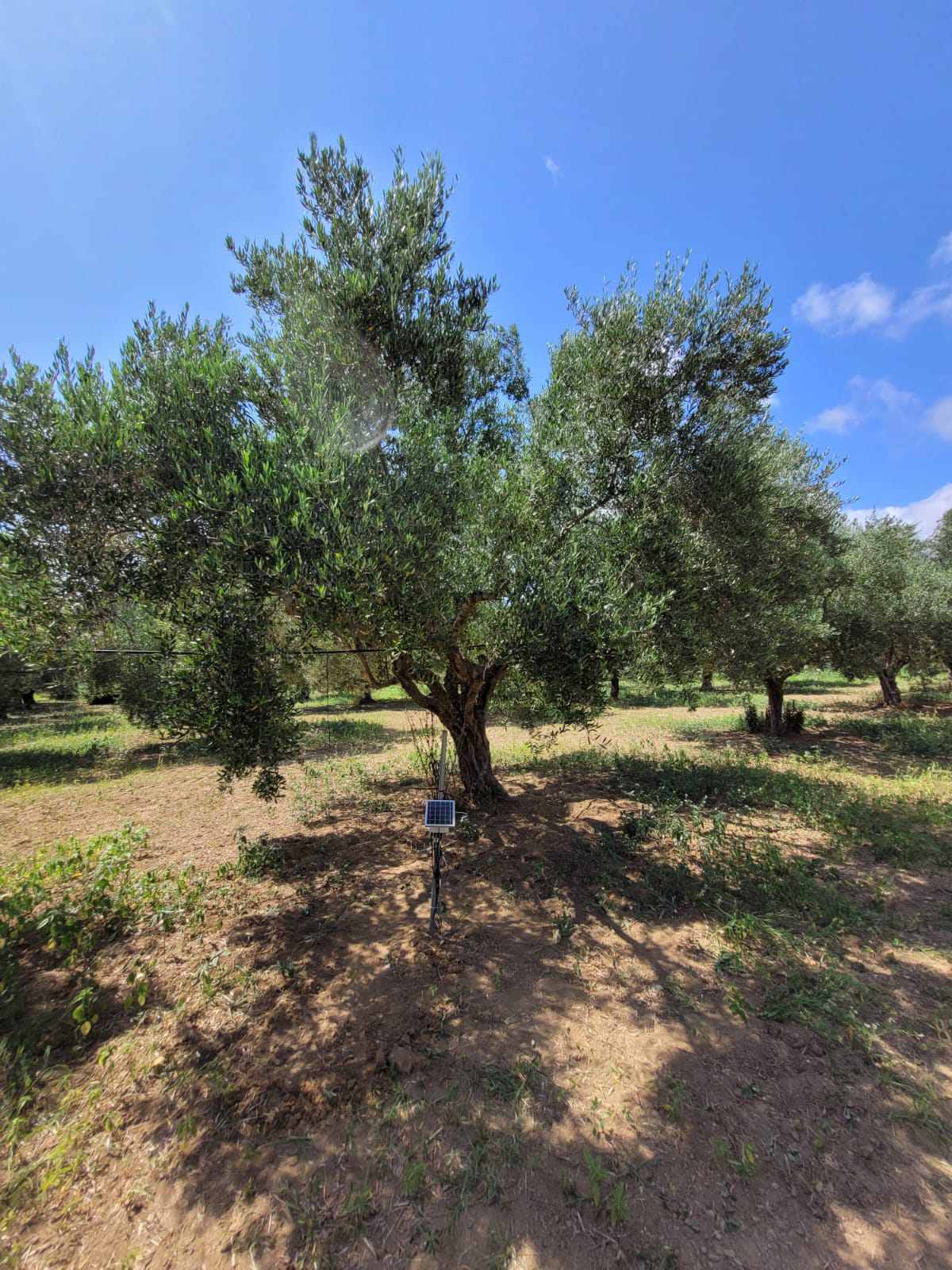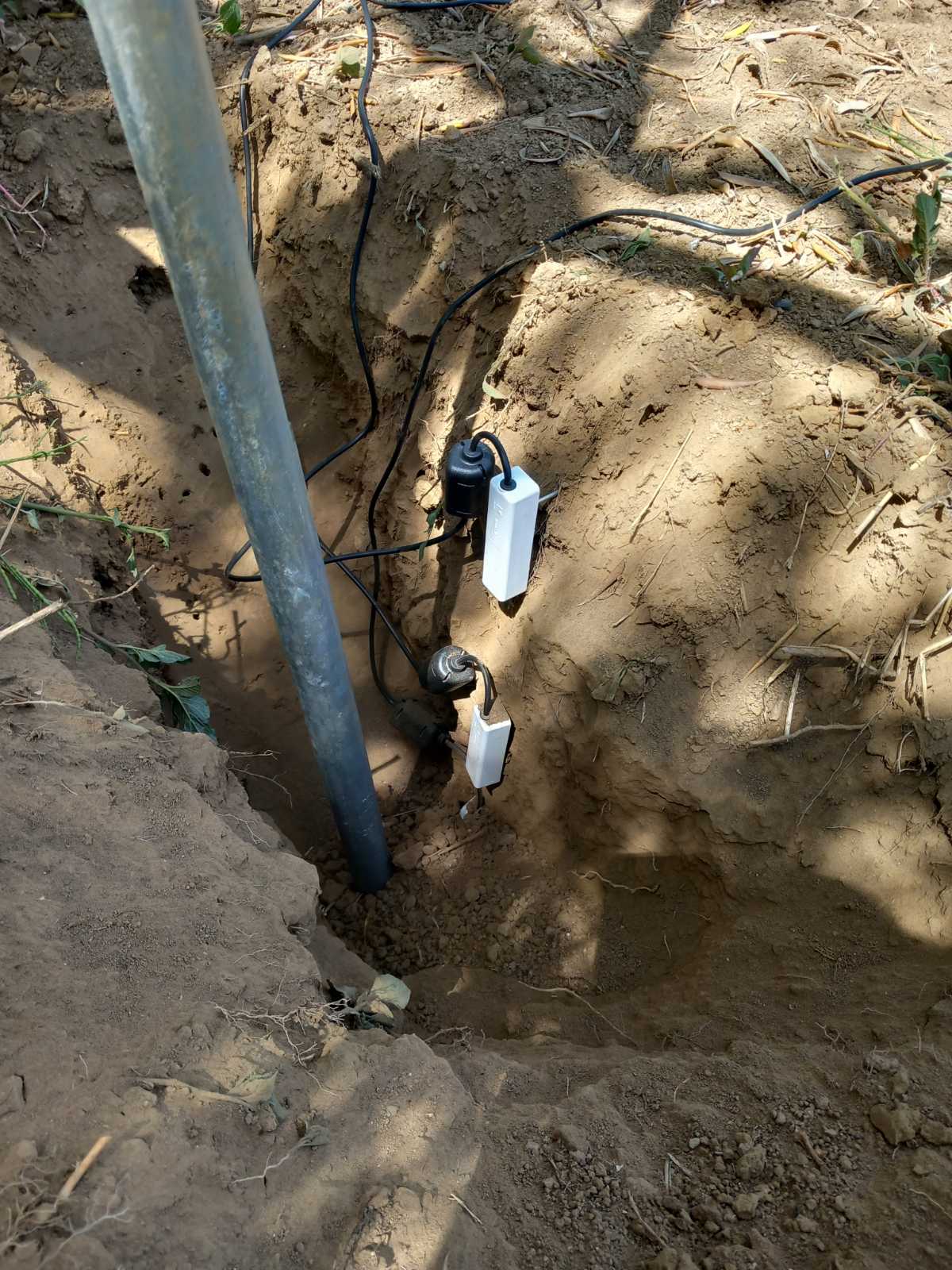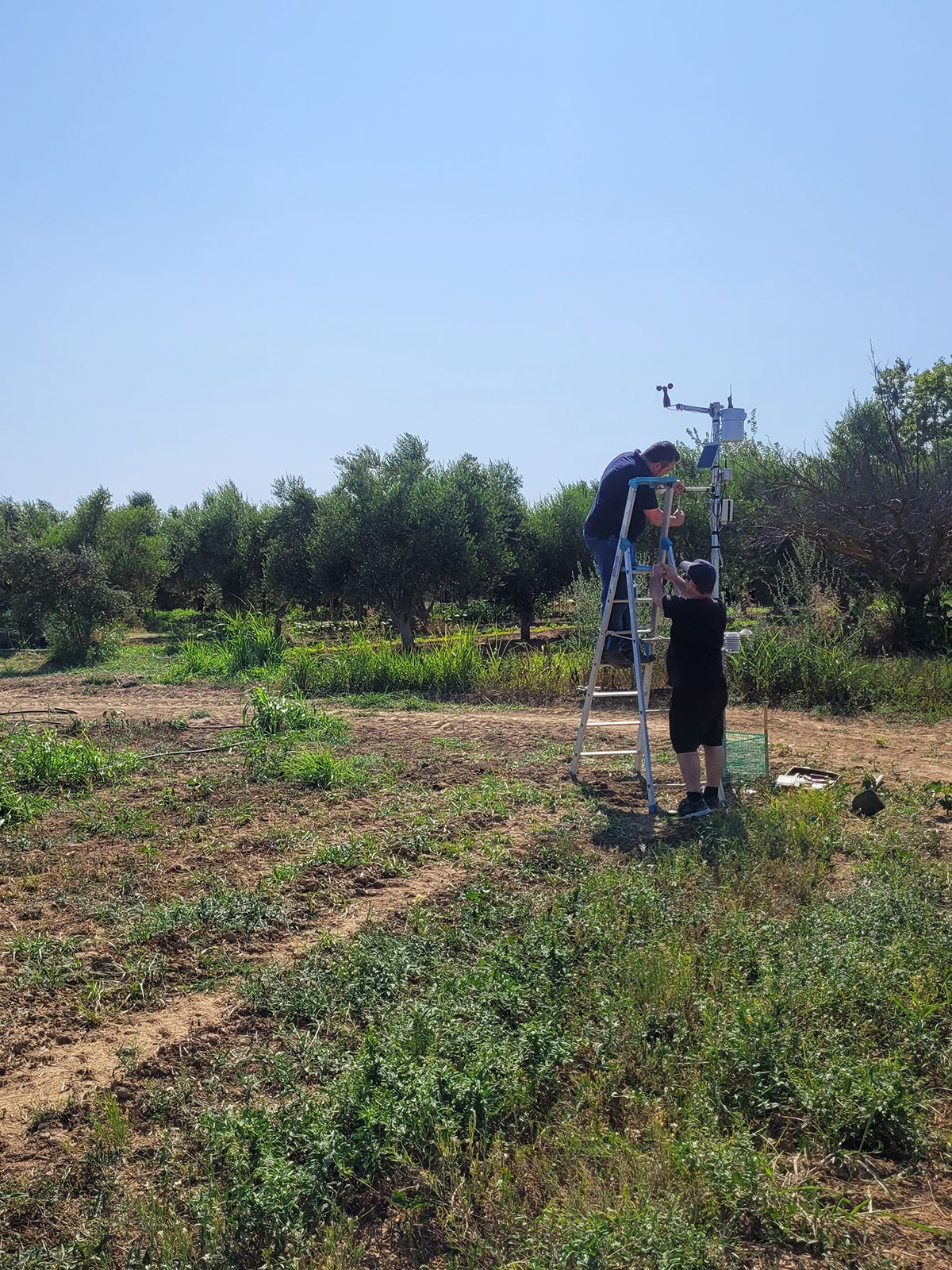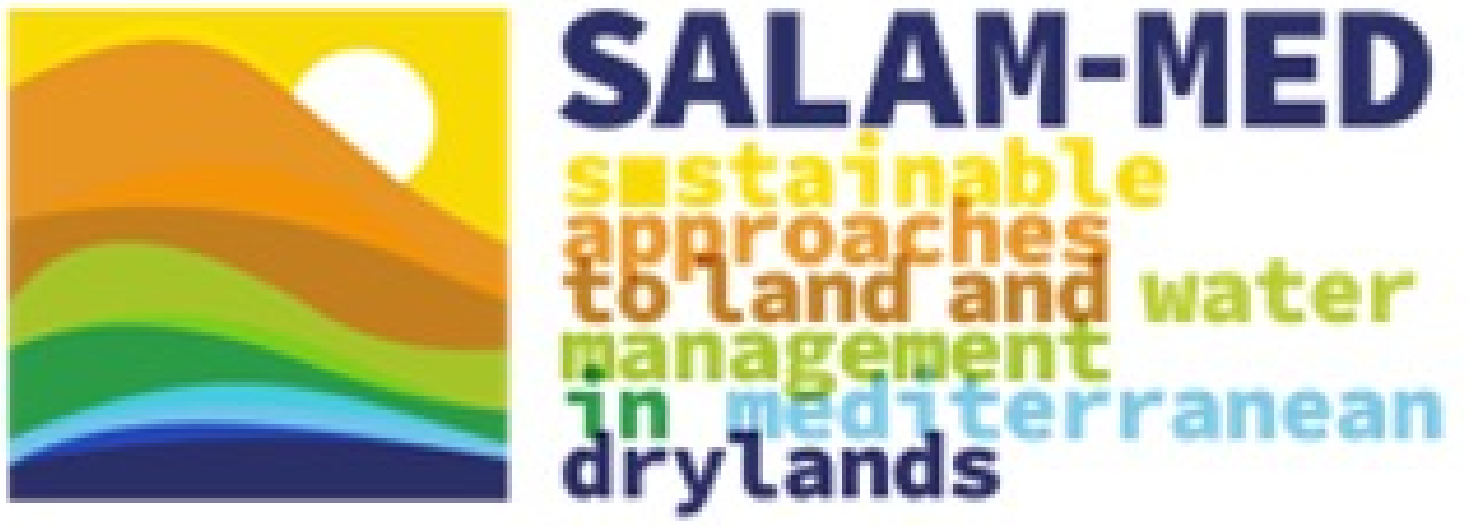Technology
Irrigation management in olive orchard

Soil moisture sensor for measuring how irrigation affect soil moisture

Soil moisture sensor for measuring how irrigation affect soil moisture

Agrometeorological station for monitoring weather conditions
About
The proposed irrigation management aspires to demonstrate and promote an efficient use of groundwater resources in agriculture, for minimizing water misuse while sustaining productivity. It involves various techniques, technologies, and strategies to ensure that olive trees receive the right amount of water at the right time. In addition, it integrates Internet of Things with WRF modelling tools to better support decision-making at farm and policy levels for the long-term sustainability of the cropping system and the associated groundwater resources.
When implementing irrigation management as a practical solution, we try to set goals like:
- Water Conservation (reduce groundwater abstractions for irrigation compared to current practices)
- Optimal Crop/Productivity (sustain productivity at current levels or increase)
- Irrigation cost Reduction (minimize energy costs)
- Environmental Sustainability Adaptation to Climate Change (increased resilience of olive-crops to prolonged droughts)
- Promotion of EU and national regulations in agriculture (WFD directives)
- Knowledge and Skill Development By aligning their efforts with these objectives, local stakeholders can achieve improved water management, increased productivity, cost savings, environmental stewardship, and overall sustainability in their agricultural or landscaping operations.
Irrigation management technology can be applied in various ecological contexts to support agricultural activities such as:
- Arid and Semi-Arid Regions
- Mediterranean Climates
- Water-Stressed Areas
- Urban Landscaping
- Coastal Environments
- Ecosystem Restoration
- Greenhouse and Controlled Environment
- Agriculture
It’s important to adapt irrigation management practices to the specific ecological context, considering factors like climate, soil type, water availability, and plant species requirements. By doing so, the technology can contribute to sustainable agriculture, efficient water use, and the preservation of ecological balance in diverse contexts.
The application of irrigation management as a practical solution can face several constraints or challenges. These constraints vary depending on factors such as geographical location, available resources, and the specific context in which it is implemented. Here are some common constraints:
- Limited Access to Technology and Infrastructure
- Financial Constraints
- Technical Knowledge and Training
- Water Availability and Quality
- Behavior and Attitudes
- Lack of Institutional Support and Policies
- Data and Information Gap
Addressing these constraints requires efforts such as improving access to technology and infrastructure, providing financial support and incentives, promoting training and education programs, developing supportive policies, and investing in data collection and dissemination systems. Overcoming these challenges can facilitate the widespread adoption and successful application of irrigation management practices.
Some contraindications are:
Economic: There may be initial investment costs that could pose a barrier to adoption, especially for small-scale or resource-constrained end-users.
Social: May require changes in traditional practices or routines, which can lead to resistance or reluctance among end-users.
Environmental: IM can lead to water use efficiency and groundwater saving, but over reliance on irrigation could lower resilience of olives to climate change.
Index
Workers needed: technical competencies needed, highly skilled workers are needed to make the technological solution work
Index 2
Ease of use: a long period of learning is required to use the technological solution
Index 3
Adaptability: it will not require too much time to be applied
Index 4
Effectiveness: The solution address the challenge / problem
Index 5
Reliability: The innovation is stable enough that no further changes need to be made in the future
Index 6
Cost: Perceived investment needed for the implementation of the innovation is high
Index 7
Greenhouse emissions: impact of technology on greenhouse emissions
Index 8
Water availability: the impact of technology on water availability
Index 9
The implementation of irrigation management solutions presents several business opportunities across different sectors. Here are some of the main business opportunities related to the use of this solution:
- Irrigation Technology Providers
- System Installation and Maintenance Services
- Consulting and Advisory Services
- Data Analytics and Software Solutions
- Water Resource Management and Consulting
- Sustainable Agriculture and Landscaping Solutions
- Research and Development
- Education and Training.
These business opportunities exist both in the agricultural sector, supporting crop production, and in the landscaping and urban greening sector. With the increasing focus on resource efficiency, sustainability, and water conservation, businesses that provide solutions and services related to irrigation management are well-positioned to contribute to the industry while addressing pressing environmental challenges.
European groundwater aquifers provide around 42 % of the total water abstraction for public water supply, agriculture, and industry (Water Framework Directive, 2000/60). The IM technology aims in addressing groundwater-related challenges and promoting responsible water use in agriculture, by providing an example from olive cultivations. Within the selected case study, irrigation and water supply depend on groundwater resources, which are also vital for supporting natural ecosystems.
Some important backround information could be:
- Awareness and Education
- Technical Expertise
- Demonstrable Benefits
- Financial Incentives
- Supportive Policies and Regulations
- Collaboration and Partnerships
- Access to Funding and Financing
By considering these background factors, stakeholders can create an enabling environment that encourages end-users to adopt and commercialize sustainable water management technologies. It is essential to address knowledge gaps, provide incentives, showcase benefits, and establish supportive policies and partnerships to maximize the adoption and impact of the solution.
Indicators
Chart not available on mobile
Living Labs for testing and implementing this technology
Living Labs as a crossroads for the development of sustainable and resilient technologies for environmental, economic and social progress.
Greece
Tech Responsible contacts
Christos Pantazis
chpantazis@noa.gr
References
Lorem ipsum dolor sit amet, consec tetur adipiscing elit, sed do eiusmod
Lorem ipsum dolor sit amet, consec tetur adipiscing elit, sed do eiusmod
Lorem ipsum dolor sit amet
Lorem ipsum dolor sit amet, consec tetur adipiscing elit, sed do eiusmod

